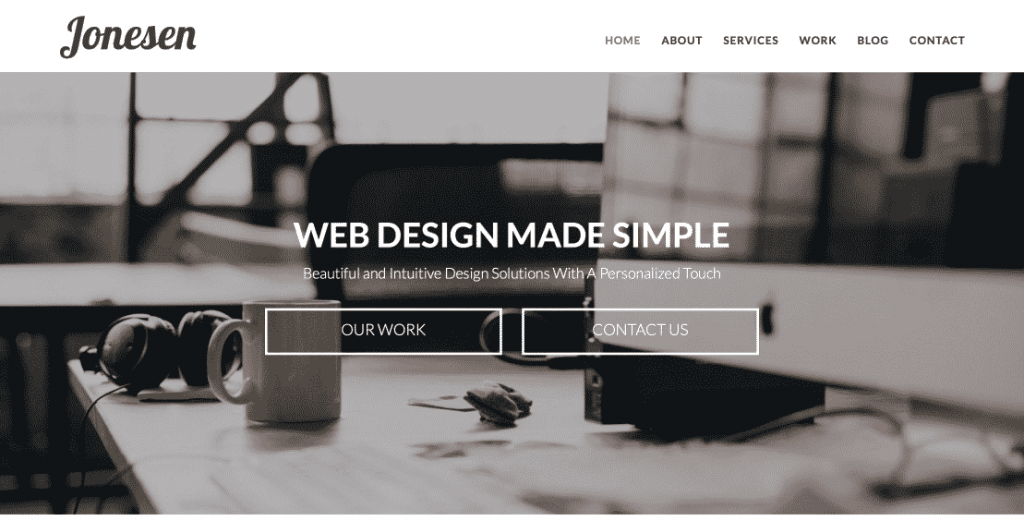
Why UX Is The Best Focus For Your Website
Share this Post
Two words: User Experience (UX)
User
A user is technically anyone using your website. Pretty self explanatory. However, you can’t please everybody.
You need to have a specific person, or type of person in mind when designing your website, or you’ll end up blending in with everybody else.
So who is your ideal user? How about someone that will buy from you?
Yup, you’re more likely to get people to buy from you if you design your site to give the best experience to your customers.
After all, you have the best customers in the world, right? They’re the reason you exist, so of course you love them and want the best for them!
That includes making sure they have the best possible experience on your website.
If you love someone, you should really get to know them.
To really provide the best experience for the users of your website, you need to know who they are, how they think, and why they’re on your site.
Who They Are
Your ideal user is your customer, that’s good to know.
It’s probably safe to assume that if you’re running a successful business, though, you have more than one customer.
Are all your customers the same? Probably not.
Since we’ve established that you can’t please everybody, it’s a good idea to narrow your focus even more.
Out of the group of ideal users (customers), pick a single ideal customer.
Who is the best kind of customer for you? What is their name? How old are they? Where do they work? What are they watching on YouTube? What kind of clothing do they wear? Do they have kids? What is their favorite color? Where do they live?
Put together a profile for this person, and “get to know them” as well as possible.
How They Think
It’s one thing to know who your ideal customer is, but it helps to take it another step and understand what makes them tick.
Are they happy at work? Do they have a good sense of humor? What would they do with $1,000,000? Would they prefer Chess, or Apples to Apples? What are they afraid of?
Why They’re On Your Site
You’ve broken down who they are and how they think, so you know them pretty well at this point. The last, and definitely not least step is to determine why they’re on your site.
Why do they do business with you? What problems do they have that you solve? What brought them to your website in the first place? Is this their first time on your site? Why did they come back? Where on your site are they spending the most time?
crazyegg.com has some cool tools to help you answer some of the questions above, but if you’re not looking to shell out the money, you could get some more basic metrics tracking from analytics.google.com
You can probably think of a lot more helpful questions to ask, the important thing is to start asking them, and use the information.
Experience
You’ve asked some important questions now, you know your ideal customer, now it’s time to put that knowledge to use.
The great Zig Ziglar said “You can have everything in life you want, if you will just help enough other people get what they want”.
In this case, the people who want things are your customers. You’ve asked the questions to understand what they want, now you have to help them get it.
“What they want” can range drastically; from data-rich blog posts, infographics, case studies, and other educational information, to fun videos, pictures, funny gifs, stories, quotes, and other personality-filled, entertaining content.
Before addressing content, however, let’s take a look at the actual design.
UX Marks The Spot
User experience is not all about the content you provide. While some customers will soak up hours of useful content through various mediums, some customers may want to get in, get out, and get on with life.
Patience in the digital world is at an all time low.
Designing your website for impatient customers will actually benefit both you and your customers.
When your customer reaches your site, can they immediately see what they want? Are there good indicators of where they will find it?
See how we designed the Jonesen home page?
Our ideal customers want two things:
– They want to see our work
and/or
– They want to hire us
So we made it nice and clear. The instant you get to the home page, the most relevant information is right in front of your face, and takes the least amount of effort to reach.
You can also see access to information about our team, our services, and our blog.
Everything is immediately visible, and there aren’t a lot of distractions to draw you away from the most important information.
Anyone coming to our site can jump right in and get to the point quickly.
This is the best UX for the quick and assertive user, but what if they want to dig deeper?
Digging For Treasure
Different users will want a different UX. Some people are looking for a direct line to your portfolio or contact information, while others want to be educated.
Some users want to see if you know what you’re talking about, whereas some just want to learn how to do it themselves.
As we’ve mentioned in the past, we design websites for businesses that want optimal results and want to pay professionals to do the work so they can focus on what they do best.
Some businesses have the time and resources to create their own site, however. We want to make sure they’re doing it right.
For those businesses, or for users who simply want to learn more about our industry, we have a blog that educates about important factors in web design, SEO, and UX.
Our blog (which you happen to be reading) serves the purpose of bringing value to those who want more information about how we think and operate, and educating those who may not be able to work with us yet on how they can get the best results before hiring the pros.
It also serves the purpose of giving the optimal user experience to the people that are looking for web design tips, and spending more time vetting their prospective web design or hosting company.
Conclusion
There are a lot of factors that go into optimizing the user experience; load speed, site layout, navigation style, content medium, content delivery style, and more.
There is no universal trick for boosting conversion, but if you get to know your ideal user well enough, you can understand what they want and provide them with the best user experience.
Optimizing your site’s UX will help boost your SEO and increase your conversion rates, all while showing your customers that you understand them and care about them.
Share this Post


